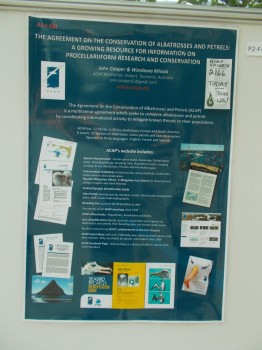The Second World Seabird Conference (WSC2) is being held this week in Cape Town, South Africa with three sessions on seabird bycatch in fisheries, ranging from longline, trawl and nets and from recreational, artisanal to commercial.
No less than six presentations on mitigating seabird bycatch in longline and trawl fisheries were made by conference delegates from South Africa and Namibia to the three sessions (click here for the conference programme). Their five presenters showed how university-supported research, NGO advocacy, governmental legislation and fisher willingness have been brought together to reduce the bycatch of albatrosses and petrels within the Benguela Current off the Atlantic coast of southern Africa by as much as 90%. Over the last decade this has led to higher degrees, publications in scientific journals, national and international awards, many more seabirds surviving to wing the oceans, and an ongoing example for other fishing nations to follow.
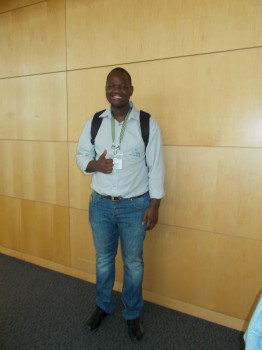
Bokamoso Lebepe of BirdLife South Africa gives a cheerful thumbs up after his presentation this week
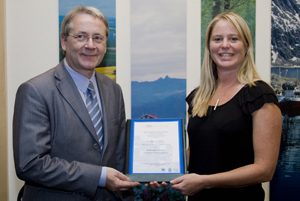
Samantha Petesersen receives an international award for her PhD thesis on bycatch in southern Africa
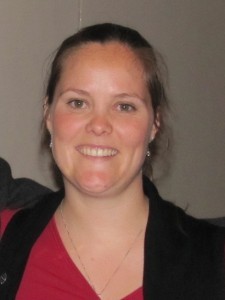
Mitigation research and advocacy by Bronwyn Currie of BirdLife South Africa has been internationally recognized
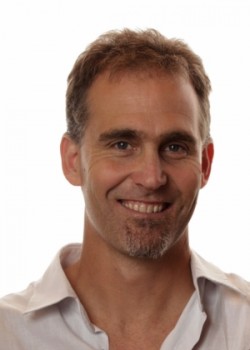
Ross Wanless has received national awards for his leadership on seabird bycatch in Africa
Southern African presentations at WSC2
Lebepe, Bokamoso (BirdLife South Africa). A review of seabird bycatch in three South African fisheries and the impact of monitoring and legislation for management.
Madden, Christine (BirdLife South Africa). Bird Barriers: a silver lining for seabirds in South Africa’s demersal trawl fishery.
Maree, Bronwyn (BirdLife South Africa). 99% there: seabird bycatch success story in a South African trawl fishery.
Naomab, Clemens (Namibia Nature Foundation). Reducing seabird mortality in the Namibian demersal longline fishery.
Rollinson, Dominic (FitzPatrick Institute, University of Cape Town). Diving behaviour of Procellaria petrels and its relevance for mitigating longline bycatch.
Rollinson, Dominic (FitzPatrick Institute, University of Cape Town). Factors affecting seabird bycatch in the pelagic longline fishery off South Africa (poster).
Click here for abstracts of the above five talks.
Significant South African publications on seabird bycatch
[Cooper, J., Petersen, S.L. & Ryan, P.G.] 2008. South African National Plan of Action for Reducing the Incidental Catch of Seabirds in Longline Fisheries. Department of Environmental Affairs & Tourism. 32 pp.
Maree, B.A., Wanless, R.M., Fairweather, T.P., Sullivan, B.J. & Yates, O. 2014. Significant reductions in mortality of threatened seabirds in a South African trawl fishery. Animal Conservation 17: 520-529.
Petersen, S.L., Honig, M.B., Ryan, P.G. & Underhill, L.G. 2009. Seabird bycatch in the pelagic longline fishery off southern Africa. African Journal of Marine Science 31: 191-204.
Petersen, S.L., Honig, M.B., Ryan, P.G., Underhill, L.G. & Goren, M. 2009. Seabird bycatch in the demersal longline fishery off southern Africa. African Journal of Marine Science 31: 205-214.
Watkins, B.P., Petersen, S.L. & Ryan, P.G. 2008. Interactions between seabirds and deep-water hake trawl gear: an assessment of impacts in South African waters. Animal Conservation 11: 247-254.
John Cooper, ACAP Information Officer, 29 October 2015
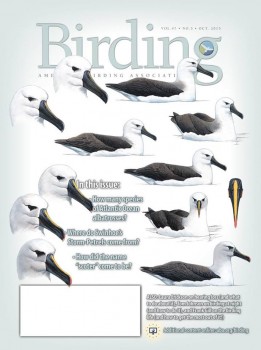

 English
English  Français
Français  Español
Español 
